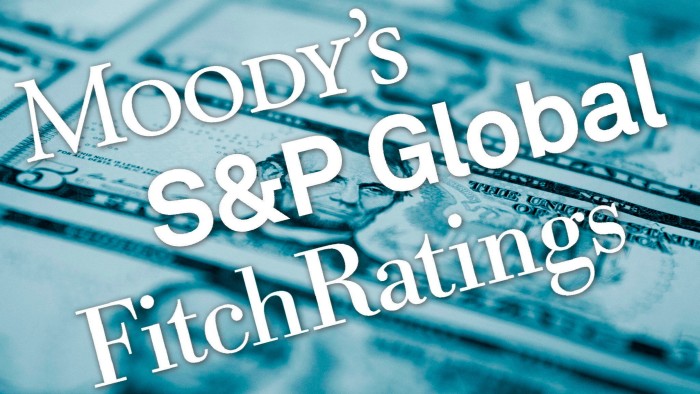Credit rating agencies should be compelled to analyse loan covenants

Roula Khalaf, Editor of the FT, selects her favourite stories in this weekly newsletter.
The writer is founder of Fox Legal Training
Much ink has been spilled about the degrading quality of investor protections in high-yield bond and leveraged loan agreements, also known as “covenants”.
These promises by the borrower to its lenders were originally designed to ensure payment of interest and principal at maturity — indeed, though they came in many different forms (such as limitations on debt, dividends and more), each and every provision contributed to this key goal.
A decade of easy money though has skewed negotiating dynamics more in favour of borrowers and their private equity backers. I have worked as a lawyer dealing with covenants for more than 20 years and they now work in a very different way than they have in the past. As such, they should be analysed in a very different way by rating agencies.
Here’s why: covenants now provide companies and their management teams with wide flexibility to borrow more debt, pay dividends to their private equity owners, rather than restrict the actions of the borrower to protect the most solemn vow to repay.
These changes are not always easy to find — in one deal, the deletion of just two words (“default or”) resulted in the borrower being able to continue paying dividends to its shareholders for 30 days after missing a coupon payment to borrowers. This turns the entire concept of the capital structure on its head, and would be impossible for most lenders to spot during the short time they have to negotiate these provisions.
The US, and Europe to a lesser extent, has seen example after example of such provisions going very wrong for lenders. In deals designed to “lengthen the runway” for these struggling businesses and give them more time to consider options for liability management without engaging lenders, the looser provisions were used in ever more creative ways.
Sadly, many of the companies that used the looser covenants over the past decade no longer exist or went through the US Chapter 11 bankruptcy protection process anyway, making the whole liability management transaction exercise more of a boon for the lawyers than a solution for the lenders.
Some might say lenders should have seen this coming — more flexibility will, of course, in all likelihood lead to higher losses as company owners are able to extract value more easily. However, covenants are not straightforward. To begin with, they are written in legalese, not English, and they are drafted by overworked senior associates working off the last deal with the closest precedent, without the luxury of time to recheck that everything works as planned.
There are services that translate legalese for lenders, and some actually rate the strength of the provisions as well, but so far this access to information has not resulted in any co-ordinated pushback by lenders against the new flexibility (at least in part to avoid the risk of accusations of collusion). Indeed, even continuing market volatility doesn’t seem to be influencing the situation — terms are not getting appreciably tighter as one might expect.
I am proposing a solution. Currently, covenant quality is not a significant factor in the methodology used by rating agencies to assess borrowers and their debt. To be clear: the likelihood of default typically does not include the quality of the underlying covenant package, and where it does, it is only in respect of financial policies and governance. This has always confounded me.
Commercially it makes sense. Rating agencies are not incentivised to comprehensively incorporate this information — very loose provisions would likely lead to a lower rating and reveal a higher likelihood of default should all flexibilities be fully flexed.
But aren’t rating agencies supposed to analyse the likelihood that a borrower might default, taking into account all available information? Covenants are key to default risk in my view.
So, what next? Since there is no commercial incentive for the rating agencies to include this information more formally, the only way to ensure consistent incorporation of this new data would be through regulation. This would mean getting the issue in front of regulators with a proposal to amend the credit rating agencies regulations to make the comprehensive consideration of covenant quality mandatory.
But first the issue would have to rise to the level of regulator concern — indeed, the transparency of these provisions is currently being considered by the International Organization of Securities Commissions. Absent a comprehensive solution, we will probably see more losses for lenders in the meantime. I think it’s time everyone learned legalese.
Comments